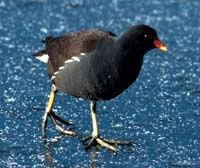Male mallards have a dark green head, yellow bill and purplish chest with a grey body. The females are mostly brown. Mallards live and breed in all parts of the UK were there is suitable wetland where they feed on seeds, berries, acorns, plants, insects and shellfish. Females make the distinctive ‘quack’ whilst the males make a quieter ‘crrib’.
Did you know? Mallards can live for almost 30 years.
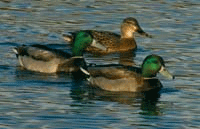
Moorhens are olive-brown on the back and head and blue-grey underneath with a red and yellow beak. The Moorhen is found anywhere where there is water and is resident in this country all year round. It eats water plants, seeds, fruit, grasses, insects, snails and worms and its call is ‘kurr’uk’.
One of the most instantly recognisable of all British birds. Swans prefer shallow, slow flowing water where they feed on water plants, insects and snails. Until recently populations were in decline but since the ban on lead fishing weights numbers have started to recover.
Did you know? Swans have a wing span of over 2 metres.
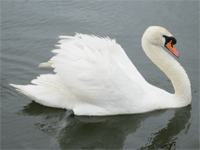
Slightly larger than a moorhen with a black body and white beak and shield it likes areas of shallow water with good vegetation cover where it feeds on plants, snails and larvae. Its call is a loud ‘kut’.
Did you know? Instead of webbed feet, a coot has lobes of skin on its toes.
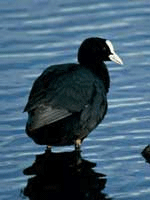
Kingfishers are usually seen as a flash of bright blue low over the water or on a perch. They like areas of shallow water with suitable banks for excavating nest holes and feed on fish and aquatic insects. It is more likely to be seen in coastal areas in the winter Its call is a shrill ‘chee’.
Did you know? A kingfishers's colour is due to iridescence rather than pigment in the feathers.
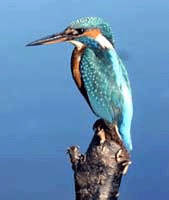
A siskin is a small finch with a yellow body and black crown. It likes beech and alder woodland where it feeds on seeds and insects. Its call is a clear, loud ‘tsuu’ or a ringing ‘tszing’.
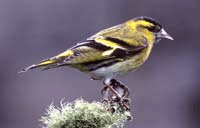
The tufted duck is black with white sides. It likes still or slow flowing water where it feeds on molluscs, insects and plants. It is normally only seen in the south-west in the winter but is resident year round in the rest of the country. The female tufted duck makes a low growling call.
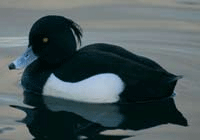
Flags like wet areas and flower from June to August.
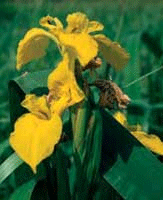

Here is a brief overview of some of the species you may see...
A very secretive bird that is difficult to see in the breeding season but easier in winter when they are more populous. The birds are brown on top and blue-grey underneath with a red bill. They like dense vegetation such as reeds and sedges where they feed on small fish and insects. Their call is very distinctive and sounds like a pig squealing or a sharp ‘kek…kek…kek’.
Did you know? There are only 700-1400 pairs of water rail in the UK.
The little grebe has a fluffy rear end and a chestnut coloured throat in summer. It likes slow moving water with lots of vegetation where it feeds on insects and larvae. It will dive when frightened and surface some distance away unseen. Its call is a whinnying trill.
This flower likes moist, grassy places and flowers from April to June. The flowers are lilac-pink or white and are 12-18mm across.

